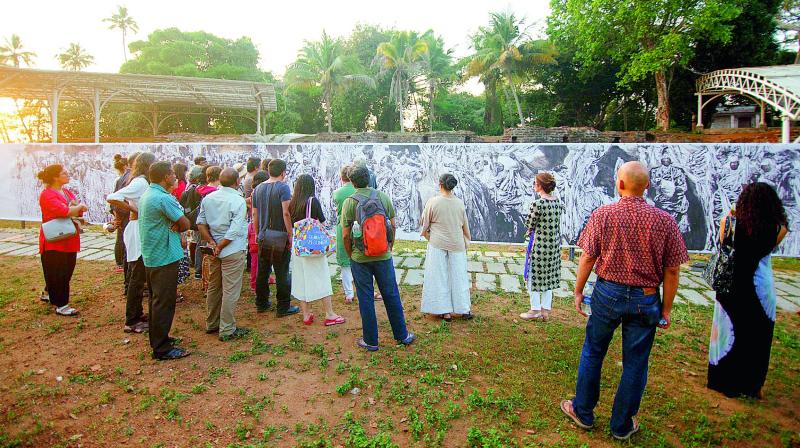Essentials: Art and the demonetisation

Has the demonetisation affected our appetite for art? Can we really make space, or time, for a collection of paintings and speeches when most of us are struggling to pay for tomatoes? The Kochi Muziris Biennale, which commenced in the port city on December 12, has decided to brave the economic weather and with over 30,000 people attending the opening week, across 12 venues, a gamble seems to have paid off.
Some would say it had to. It’s now the only art biennale on the Indian sub-continent. But the Kochi Muziris Biennale should be understood more for its stupendous success in developing a business model in art events marketing. A generous funding from the Kerala government has certainly helped too. The state’s politicians gave the first edition of the Biennale '2 cr and this year, it was even more generous by earmarking '7.5 cr for the event. For Dr. V. Venu, principal secretary to state tourism, it was “money well spent.”
You see, Kerala really needs its tourists. “When Kerala tourism had a crisis on its hands with the demonetisation affecting arrivals, the Biennale created a unique economic zone that supported the sector and brought money into the hands of the common man and local community,” Venu said. The marketing of the event and its execution have been impeccable. It started with the very choice of Fort Kochi as the venue four years ago. Fort Kochi and Mattanchery are two of most sought-after tourist destinations in Kerala. By adding art to sites with inherent tourism potential, the Kochi Biennale Foundation (KBF) was able to create a cultural and economic chain reaction within the city’s economy. They had even timed it right. The Biennale runs from December to March — the peak tourist season.
This period also coincides with a slew of other events such as the International Film Festival of Kerala and a series of temple and church festivals across the state, providing a catchment zone of visitors across Fort Kochi and Mattancherry. This rush benefits way-side shops, taxi operators, home-stay owners and a host of other essential services that will keep the economics engine well oiled for a few months due to a multiplier effect. For the 2016 edition, the Biennale’s promoters even trained groups of auto drivers to act as guides as they ferried visitors to the event’s 12 venues. The KBF has also been highly successful in incorporating every nuance of Kochi’s history to create a razzmatazz of high-sounding art rhetoric catering to the needs of a well-oiled global culture industry. So we have “Forming in the pupil of an Eye” as the theme of Biennale, 2016 which features talent from 31 countries.
Sudarshan Shetty, the curator of the event, explained the choice of the theme by saying that the eye is the “only reflective organ in the body. It reflects as much back into the world as it takes”. “Forming in the pupil of an eye is not an image of one reality, but a reflection of multiple realities and of multiple possibilities in time. My curatorial approach was shaped therefore as a conversation between different streams and forms of art practice. This Biennale is intended as a dialogue between multiple perspectives and possibilities as it evolves within the space and through the duration of the Biennale and beyond,” he said. But what it has managed to reflect, is indeed encouraging.

